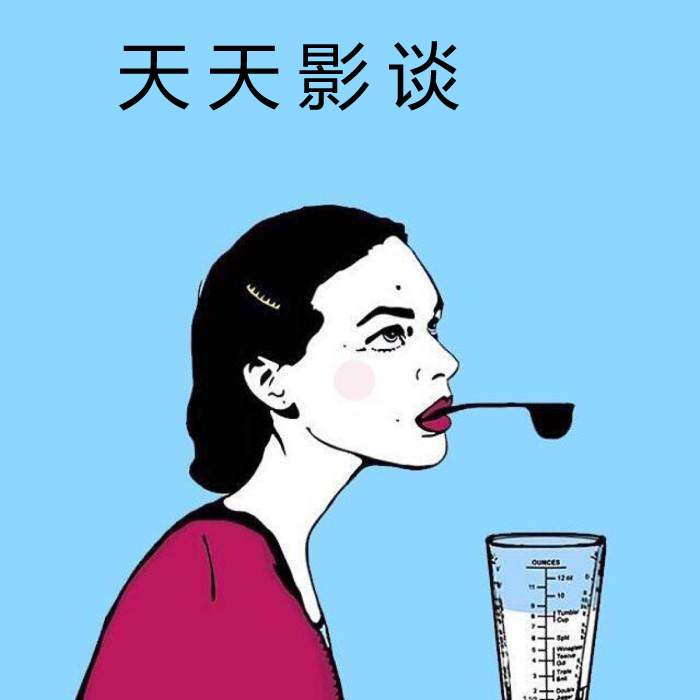
иӢұиҜӯзҡ„дёҖиҲ¬иҝҮеҺ»ж—¶жңүе“Әдәӣ
2019-07-21 В· ж—ҘиҗҪжҳҜе…Қиҙ№зҡ„пјҢжҳҘеӨҸз§ӢеҶ¬д№ҹжҳҜгҖӮ

иӢұиҜӯзҡ„дёҖиҲ¬иҝҮеҺ»ж—¶иЎЁзӨәиҝҮеҺ»жҹҗдёӘж—¶й—ҙеҸ‘з”ҹзҡ„еҠЁдҪңжҲ–еӯҳеңЁзҡ„зҠ¶жҖҒгҖӮеёёе’ҢиЎЁзӨәиҝҮеҺ»зҡ„ж—¶й—ҙзҠ¶иҜӯиҝһз”ЁпјҢеҰӮyesterday, last week, last night, last year, last month, in 2003, three years agoзӯүгҖӮ
дёҖиҲ¬иҝҮеҺ»ж—¶зҡ„еҹәжң¬з»“жһ„пјҡ
1гҖҒиӮҜе®ҡеҸҘвҖңдё»иҜӯ+еҠЁиҜҚиҝҮеҺ»ејҸ+е…¶д»–вҖқжҲ–иҖ…вҖңдё»иҜӯ+was/were+е…¶д»–вҖқгҖӮ
дҫӢпјҡI went to Sanya last year.жҲ‘еҺ»е№ҙеҺ»дәҶдёүдәҡгҖӮ
2гҖҒеҗҰе®ҡеҸҘвҖңдё»иҜӯ+didnвҖҷt+еҠЁиҜҚеҺҹеҪў+е…¶д»–вҖқжҲ–вҖңдё»иҜӯ+wasnвҖҷt/werenвҖҷt+е…¶д»–вҖқгҖӮ
дҫӢпјҡI didnвҖҷt go to Sanya last year.еҺ»е№ҙжҲ‘жІЎжңүеҺ»дёүдәҡгҖӮ
3гҖҒдёҖиҲ¬з–‘й—®еҸҘвҖңDid+дё»иҜӯ+еҠЁиҜҚеҺҹеҪў+е…¶д»–?вҖқ жҲ–иҖ…вҖңWas/Were+дё»иҜӯ+е…¶д»–?вҖқ
дҫӢпјҡDid you go to Sanya last year? дҪ 们еҺ»е№ҙеҺ»дәҶдёүдәҡеҗ—?
4гҖҒзү№ж®Ҡз–‘й—®еҸҘпјҡзү№ж®Ҡз–‘й—®иҜҚ+дёҖиҲ¬з–‘й—®еҸҘ?
дҫӢпјҡWhat did you do last year? еҺ»е№ҙдҪ еҺ»е№Ід»Җд№ҲдәҶ?
жү©еұ•иө„ж–ҷпјҡ
дёҖиҲ¬иҝҮеҺ»ж—¶зҡ„и®°еҝҶеҸЈиҜҖпјҡ
дёҖиҲ¬иҝҮеҺ»ж—¶е№¶дёҚйҡҫпјҢиҝҮеҺ»еҠЁдҪңгҖҒзҠ¶жҖҒи®°еҝғй—ҙгҖӮеҠЁиҜҚиҰҒз”ЁиҝҮеҺ»ејҸпјҢж—¶й—ҙзҠ¶иҜӯеҸҘжң«з«ҷгҖӮеҗҰе®ҡеҸҘеҫҲз®ҖеҚ•пјҢdidn't з«ҷеҠЁеҺҹеүҚпјҢе…¶е®ғйғЁеҲҶдёҚиҰҒеҸҳгҖӮ
дёҖиҲ¬з–‘й—®еҸҘд№ҹеҘҪеҸҳпјҢdidж”ҫеҸҘеӯҗеүҚпјҢдё»иҜӯгҖҒеҠЁеҺҹгҖҒе…¶е®ғйғЁеҲҶдҫқж¬Ўз«ҷз«ӢгҖӮзү№ж®Ҡз–‘й—®еҸҘд№ҹз®ҖеҚ•пјҢз–‘й—®иҜҚеҠ дёҖиҲ¬з–‘й—®еҸҘи®°еҝғй—ҙгҖӮ
дёҖиҲ¬иҝҮеҺ»ж—¶иЎЁзӨәиҝҮеҺ»жҹҗдёӘж—¶й—ҙжҲ–жҹҗдёҖж®өж—¶й—ҙеҶ…еҸ‘з”ҹзҡ„еҠЁдҪңжҲ–еӯҳеңЁзҡ„зҠ¶жҖҒпјҢеёёе’ҢиҝҮеҺ»зҡ„ж—¶й—ҙзҠ¶иҜӯиҝһз”ЁгҖӮ
еҸӮиҖғиө„ж–ҷжқҘжәҗпјҡзҷҫеәҰзҷҫ科-дёҖиҲ¬иҝҮеҺ»ж—¶
2019-07-21 В· дә«еҸ—з”өеҪұйӯ…еҠӣпјҢеҲҶдә«еҘҪзңӢз”өеҪұ

иӢұиҜӯзҡ„дёҖиҲ¬иҝҮеҺ»ж—¶жңүпјҡ
1гҖҒдёҖиҲ¬иҝҮеҺ»ж—¶иЎЁзӨәеңЁиҝҮеҺ»жҹҗдёӘзү№е®ҡж—¶й—ҙеҸ‘з”ҹпјҢд№ҹеҸҜд»ҘиЎЁзӨәиҝҮеҺ»д№ жғҜжҖ§гҖҒз»ҸеёёжҖ§зҡ„еҠЁдҪңгҖӮдёҖиҲ¬дёҚејәи°ғеҠЁдҪңзҡ„еҪұе“ҚпјҢеҸӘиҜҙжҳҺзҡ„дәӢжғ…гҖӮ
еҸҘејҸпјҡдё»иҜӯ+еҠЁиҜҚиҝҮеҺ»ејҸ+е®ҫиҜӯ+е…¶е®ғ
дҫӢеҸҘпјҡ
I had a word with Julia this morning.
д»ҠеӨ©ж—©жҷЁпјҢжҲ‘и·ҹжңұиҺүеЁ…иҜҙдәҶеҮ еҸҘиҜқгҖӮ
He smoked many cigarettes a day until he gave up.
д»–жІЎжңүжҲ’зғҹзҡ„йӮЈйҳөеӯҗпјҢжҠҪзғҹжҠҪеҫ—еҸҜеҮ¶дәҶгҖӮ
2гҖҒдёҖиҲ¬иҝҮеҺ»ж—¶еёёдёҺиЎЁзӨәиҝҮеҺ»зҡ„ж—¶й—ҙзҠ¶иҜӯжҲ–д»ҺеҸҘиҝһз”ЁпјҢеҰӮпјҡyesterday,last week ,in the past ,in 1993,at that time,once,during the war,before,a few days ago,when зӯүзӯүгҖӮ
жіЁж„ҸпјҡеңЁи°ҲеҲ°е·Іжӯ»еҺ»зҡ„дәәзҡ„жғ…еҶөж—¶пјҢеӨҡз”ЁиҝҮеҺ»ж—¶гҖӮ
дҫӢеҸҘпјҡ
He was dead in 1990.
д»–жӯ»дәҺ1990е№ҙгҖӮ
3гҖҒиЎЁзӨәиҝҮеҺ»иҝһз»ӯеҸ‘з”ҹзҡ„еҠЁдҪңж—¶пјҢиҰҒз”ЁиҝҮеҺ»ж—¶гҖӮиҝҷз§Қжғ…еҶөдёӢпјҢеҫҖеҫҖжІЎжңүиЎЁзӨәиҝҮеҺ»зҡ„ж—¶й—ҙзҠ¶иҜӯпјҢиҖҢйҖҡиҝҮдёҠдёӢж–ҮжқҘиЎЁзӨәгҖӮ
дҫӢеҸҘпјҡ
The boy opened his eyes for a momentпјҢlooked at the captainпјҢand then died.
йӮЈз”·еӯ©жҠҠзңјзқӣеј ејҖдәҶдёҖдјҡе„ҝпјҢзңӢзңӢиҲ№й•ҝпјҢ然еҗҺе°ұеҺ»дё–дәҶгҖӮ
4гҖҒиЎЁзӨәеңЁжӯӨд№ӢеүҚдёҖж®өж—¶й—ҙеҶ…з»ҸеёёжҲ–еҸҚеӨҚзҡ„еҠЁдҪңгҖӮеёёдёҺalwaysпјҢneverзӯүиҝһз”ЁгҖӮ
дҫӢеҸҘпјҡ
Mrs. Peter always carried an umbrella.
еҪјеҫ—еӨӘеӨӘиҝҮеҺ»иҖҒжҳҜеёҰзқҖдёҖжҠҠдјһгҖӮпјҲеҸӘжҳҜиҜҙжҳҺеҘ№иҝҮеҺ»зҡ„еҠЁдҪңпјҢдёҚиЎЁжҳҺеҘ№жҳҜеҗҰеёёеёҰзқҖдјһгҖӮпјү
жҜ”иҫғпјҡ
Mrs. Peter always carries an umbrella.
еҪјеҫ—еӨӘеӨӘжҖ»жҳҜеёҰзқҖдёҖжҠҠдјһгҖӮпјҲиҜҙжҳҺиҝҷжҳҜеҘ№зҡ„д№ жғҜпјҢиЎЁжҳҺеҘ№д»Қ然иҝҳд№ жғҜжҖ»еёҰзқҖдёҖжҠҠдјһпјү
Mrs. Peter is always carrying an umbrella.
еҪјеҫ—еӨӘеӨӘжҖ»жҳҜеёҰзқҖдёҖжҠҠдјһгҖӮпјҲиЎЁзӨәиҜҙиҜқиҖ…еҜ№иҝҷдёҖеҠЁдҪңжҲ–иЎҢдёәеҺҢзғҰпјү
5гҖҒеҰӮжһңејәи°ғе·Із»Ҹз»Ҳжӯўзҡ„д№ жғҜж—¶иҰҒз”Ё used to doпјҲиҝҮеҺ»еёёеёёеҒҡпјҢиҖҢдёҚйӮЈж ·еҒҡдәҶпјү
дҫӢеҸҘпјҡ
He used to drink alcohol.
д»–иҝҮеҺ»е–қй…’гҖӮпјҲж„Ҹе‘ізқҖд»–дёҚе–қй…’дәҶгҖӮе–қй…’иҝҷдёӘеҠЁдҪңз»ҲжӯўдәҶпјү
I used to take a walk in the morning.
жҲ‘иҝҮеҺ»жҳҜеңЁж—©жҷЁж•ЈжӯҘгҖӮпјҲж„Ҹе‘ізқҖдёҚеңЁж—©жҷЁж•ЈжӯҘдәҶпјү
жҜ”иҫғпјҡ
I took a walk in the morning.
жҲ‘жӣҫз»ҸеңЁж—©жҷЁж•ЈиҝҮжӯҘгҖӮпјҲеҸӘжҳҜиҜҙжҳҺиҝҮеҺ»иҝҷдёҖеҠЁдҪңпјү
I never drank wine.
жҲ‘д»ҘеүҚд»ҺдёҚе–қй…’гҖӮпјҲдёҚж¶үеҸҠеҲ°иҜҙжҳҺзҺ°еңЁжҳҜеҗҰе–қй…’пјү
6гҖҒжңүдәӣеҸҘеӯҗпјҢиҷҪ然没жңүиЎЁзӨәиҝҮеҺ»зЎ®е®ҡж—¶й—ҙзҡ„зҠ¶иҜӯпјҢдҪҶе®һйҷ…дёҠжҳҜжҢҮиҝҮеҺ»еҸ‘з”ҹзҡ„еҠЁдҪңжҲ–еӯҳеңЁзҡ„зҠ¶жҖҒзҡ„иҜқпјҢд№ҹиҰҒз”ЁиҝҮеҺ»ж—¶пјҢиҝҷдёҖзӮ№пјҢжҲ‘们дёӯеӣҪеӯҰз”ҹеҫҖеҫҖеҮәй”ҷпјҢиҰҒзү№еҲ«жіЁж„ҸпјҒ
дҫӢеҸҘпјҡ
I didn''t know you were in Paris.
жҲ‘дёҚзҹҘйҒ“дҪ еңЁе·ҙй»ҺгҖӮпјҲеӣ дёәеңЁиҜҙиҜқж—¶пјҢжҲ‘е·Із»ҸзҹҘйҒ“дҪ еңЁе·ҙй»ҺдәҶгҖӮиҝҷеҸҘиҜқжҢҮзҡ„жҳҜиҜҙиҜқд№ӢеүҚпјҢжүҖд»ҘеҸӘиғҪз”ЁиҝҮеҺ»ж—¶иЎЁзӨәгҖӮе®һйҷ…дёҠпјҢиҝҷеҸҘиҜқжҡ—жҢҮпјҡBut now I know you are here.пјү
I thought you were ill.
жҲ‘д»ҘдёәдҪ з—…дәҶе‘ўгҖӮпјҲиҝҷеҸҘиҜқеә”жҳҜеңЁиҜҙиҜқд№ӢеүҚпјҢжҲ‘д»ҘдёәдҪ з—…дәҶгҖӮдҪҶжҳҜжҲ‘зҹҘйҒ“зҺ°еңЁдҪ жІЎз—…пјү
еҸӮиҖғиө„ж–ҷжқҘжәҗпјҡзҷҫеәҰзҷҫ科-дёҖиҲ¬иҝҮеҺ»ж—¶
2017-07-02 В· TAиҺ·еҫ—и¶…иҝҮ519дёӘиөһ

гҖҖгҖҖпјҲ1пјүдёҖиҲ¬жғ…еҶөдёӢпјҢеҠЁиҜҚиҜҚе°ҫеҠ ed пјҢеҰӮпјҡ
гҖҖгҖҖworkвҖ”workedпјӣ playвҖ”playedпјӣwantвҖ” wantedпјӣ actвҖ”acted
гҖҖгҖҖпјҲ2пјүд»ҘдёҚеҸ‘йҹізҡ„ e з»“е°ҫеҠЁиҜҚпјҢеҠЁиҜҚиҜҚе°ҫеҠ dпјҢеҰӮпјҡ
гҖҖгҖҖliveвҖ”livedпјӣ moveвҖ”movedпјӣ decideвҖ”decidedпјӣ declineвҖ”declinedпјӣ hopeвҖ”hopedпјӣ
гҖҖгҖҖпјҲ3пјүд»Ҙиҫ…йҹіеӯ—жҜҚ + yз»“е°ҫзҡ„еҠЁиҜҚпјҢжҠҠyеҸҳдёәi еҶҚеҠ edпјҢеҰӮпјҡ
гҖҖгҖҖstudied tried copied justified cried carried embodied emptied
гҖҖгҖҖпјҲ4пјүд»ҘдёҖдёӘиҫ…йҹіеӯ—жҜҚз»“е°ҫзҡ„йҮҚиҜ»й—ӯйҹіиҠӮеҠЁиҜҚпјҢеҸҢеҶҷиҜҚе°ҫиҫ…йҹіеӯ—жҜҚпјҢеҶҚеҠ edпјҢеҰӮпјҡ
гҖҖгҖҖstopped begged fretted dragged dropped planned dotted dripped
гҖҖгҖҖпјҲ5пјүжіЁпјҡдёҚ规еҲҷеҠЁиҜҚзҡ„иҝҮеҺ»ејҸеҸҳеҢ–规еҫӢжҖ§дёҚејәпјҢйЎ»еӨҡеҠ и®°еҝҶгҖӮ
гҖҖгҖҖgo - wentпјҢmake - madeпјҢget - got пјҢbuy - bought пјҢcome - came пјҢfly-flew пјҢis/am-wasпјҢare-were пјҢsee-sawпјҢbring-broughtпјҢdo-didпјҢteach-taught, think-thought, say-said,sit-sat. read-read, spend-spent, eat-ate,give-gave,sit-sat,tell-told,write-wrote,feel-felt,find-found,hear-heard,know-knew,
гҖҖгҖҖput-put,grow-grew,take-took,catch-caught,come-came,become-became,swim-swamпјҢsweepвҖ”sweptпјҢsingвҖ”sangпјҢdrawвҖ”drewпјҢ
гҖҖгҖҖд»ҘдёҠзҡ„пјҲ1пјүиҮіпјҲ4пјүжқЎдёӯзҡ„еҸ‘йҹіеқҮжңүж”№еҸҳпјҢе…·дҪ“еҲҶеҲ«жңү/d/ /t/ /id/гҖӮ
гҖҖгҖҖиҖҢдёҚ规еҲҷеҠЁиҜҚзҡ„иҝҮеҺ»ејҸзҡ„еҸ‘йҹіеҲҷз•ҘжңүдёҚеҗҢпјҢдҪҶжҳҜжңүдәӣиҝҳжҳҜжҢүз…§дёҖе®ҡ规еҫӢеҸҳеҢ–зҡ„гҖӮеҰӮд»ҘдёҠзҡ„пјҡmake - madeпјҢget - got пјҢbuy - bought пјҢcome - came пјҢfly-flew пјҢbring-broughtпјҢteach-taught, think-thought, say-said,sit-sat. read-read, spend-spent,give-gave,tell-told,write-wrote,feel-felt,find-found,hear-heard,know-knew,put-put,grow-grew,take-took,catch-caught,come-came,become-became,swim-swamпјҢsweepвҖ”sweptпјҢsingвҖ”sangпјҢdrawвҖ”drewгҖӮ
гҖҖгҖҖд»”з»ҶзңӢдёҖзңӢпјҢиғҪеҸ‘зҺ°е®ғ们зҡ„дёҖдәӣеҸҳеҢ–规еҫӢпјҢд№ҹе°ұжҳҜиҜҙдёҚйңҖиҰҒжӯ»и®°зЎ¬иғҢиҝҷдәӣиҝҮеҺ»ејҸпјҢзҹҘйҒ“дәҶеҺҹеһӢе’ҢеҸҳеҢ–规еҫӢпјҢе°ұеҸҜд»ҘеҶҷеҮәжқҘдәҶгҖӮжңүзҡ„еҸҳеҢ–йғЁеҲҶиҜ»йҹід№ҹжҳҜжңү规еҫӢзҡ„гҖӮеҲҶзұ»и®°еҝҶжҳҜеҜ№еӯҰд№ иҝҮеҺ»ејҸеҫҲжңүеё®еҠ©зҡ„пјҒ
зј–иҫ‘жң¬ж®ө
з”Ёжі•пјҡ
гҖҖгҖҖпјҲ1пјү
гҖҖгҖҖиЎЁзӨәиҝҮеҺ»жҹҗдёҖж—¶еҲ»жҲ–жҹҗдёҖж®өж—¶й—ҙеҶ…жүҖеҸ‘з”ҹзҡ„еҠЁдҪңжҲ–жғ…еҶөпјҢйҖҡеёёдёҖиҲ¬иҝҮеҺ»ејҸеёҰжңүиЎЁзӨәеҠЁдҪңж—¶й—ҙзҠ¶иҜӯзҡ„иҜҚпјҢиҜҚз»„жҲ–д»ҺеҸҘ,еҰӮ yesterday, the day before last, last week, two days ago зӯү,дёҠдёӢж–Үжё…жҘҡж—¶еҸҜд»ҘдёҚеёҰж—¶й—ҙзҠ¶иҜӯгҖӮ I worked in that factory last year. еҺ»е№ҙжҲ‘еңЁйӮЈдёҖ家е·ҘеҺӮе·ҘдҪңгҖӮ I went to the Tian Long Mountain yesterday. жҳЁеӨ©жҲ‘们еҺ»дәҶеӨ©йҫҷеұұгҖӮ
гҖҖгҖҖдёҖиҲ¬иҝҮеҺ»ж—¶зҡ„з”Ёжі•дёҖ.жҰӮеҝөпјҡдёҖиҲ¬иҝҮеҺ»ж—¶жҳҜиЎЁзӨәеңЁиҝҮеҺ»зҡ„ж—¶й—ҙйҮҢеҸ‘з”ҹзҡ„еҠЁдҪңжҲ–зҠ¶жҖҒпјҢйҖҡеёёдёҺиЎЁзӨәиҝҮеҺ»зҡ„ж—¶й—ҙзҠ¶иҜӯиҝһз”ЁгҖӮ
гҖҖгҖҖдәҢпјҺж—¶й—ҙзҠ¶иҜӯпјҡyesterday, the day before yesterday, two days ago, long long ago,a minute ago,last year(week, month), just now, at that time, in those days.
гҖҖгҖҖдёүпјҺиҝҮеҺ»ж—¶зҡ„з”Ёжі•пјҡ1пјҺжңүзЎ®е®ҡзҡ„иҝҮеҺ»ж—¶й—ҙзҠ¶иҜӯж—¶иҰҒз”ЁиҝҮеҺ»ејҸгҖӮ
гҖҖгҖҖдҫӢпјҡWe had a good time last week.
гҖҖгҖҖ2пјҺиЎЁзӨәиҝҮеҺ»иҝһз»ӯеҸ‘з”ҹзҡ„еҠЁдҪңж—¶пјҢиҰҒз”ЁиҝҮеҺ»ејҸгҖӮ
гҖҖгҖҖдҫӢпјҡThe boy closed the door, turned off the window, and then went to bed.
гҖҖгҖҖ3. иЎЁзӨәиҝҮеҺ»дёҖж®өж—¶й—ҙеҶ…з»ҸеёёжҲ–еҸҚеӨҚзҡ„еҠЁдҪңпјҢиҰҒз”ЁиҝҮеҺ»ејҸгҖӮ
гҖҖгҖҖдҫӢпјҡShe often came to help me at that time.
гҖҖгҖҖеӣӣ.дёҖиҲ¬иҝҮеҺ»ејҸзҡ„жһ„жҲҗеҪўејҸпјҡвҳҶBeеҠЁиҜҚзҡ„иҝҮеҺ»ејҸпјҡ (1)иӮҜе®ҡеҸҘпјҡдё»иҜӯ+ beеҠЁиҜҚзҡ„иҝҮеҺ»ејҸпјҲwas, wereпјү
гҖҖгҖҖдҫӢпјҡHe was ill yesterday. She was nine two years ago.They were my students long long ago.
гҖҖгҖҖ(2)еҗҰе®ҡеҸҘпјҡдё»иҜӯ+ beеҠЁиҜҚзҡ„иҝҮеҺ»ејҸпјҲwas, wereпјү+ not
гҖҖгҖҖдҫӢпјҡHe was not ill yesterday.She was not nine two years ago.They were not my students long long ago.
гҖҖгҖҖ(3)дёҖиҲ¬з–‘й—®еҸҘпјҡзӣҙжҺҘжҠҠbeеҠЁиҜҚжҸҗеҲ°еҸҘйҰ–гҖӮ
гҖҖгҖҖдҫӢпјҡWas he ill yesterday?
гҖҖгҖҖиӮҜе®ҡеӣһзӯ”пјҡYes, he was.
гҖҖгҖҖеҗҰе®ҡеӣһзӯ”пјҡNo, he wasn't.Was she nine two years ago? Yes, she was. / No, she wasn't.Were they your students long long ago? Yes, they were. / No, they weren't.
гҖҖгҖҖвҳҶе®һж„ҸеҠЁиҜҚзҡ„иҝҮеҺ»ејҸпјҡ(1)иӮҜе®ҡеҸҘпјҡдё»иҜӯ+еҠЁиҜҚзҡ„иҝҮеҺ»ејҸ
гҖҖгҖҖдҫӢпјҡHe played football last week.She watched TV last night.
гҖҖгҖҖ(2)еҗҰе®ҡеҸҘпјҡдё»иҜӯ+ did not +еҠЁиҜҚеҺҹеҪў
гҖҖгҖҖдҫӢпјҡHe did not play football last week.She didnвҖҷt watch TV last night.
гҖҖгҖҖ(3)дёҖиҲ¬з–‘й—®еҸҘпјҡDid +дё»иҜӯ+еҠЁиҜҚеҺҹеҪў дҫӢпјҡDid he play football last week?
гҖҖгҖҖеӣһзӯ”пјҡYes, he did./ No, he didn't.
гҖҖгҖҖDid she watch TV last night?
гҖҖгҖҖеӣһзӯ”пјҡYes, she did. / No, she didnвҖҷt.
гҖҖгҖҖдә”пјҺеҠЁиҜҚеҸҳиҝҮеҺ»ејҸзҡ„еҮ з§Қ常用规еҲҷпјҡ1пјҺдёҖиҲ¬еҠЁиҜҚзӣҙжҺҘ+ ed;
гҖҖгҖҖдҫӢпјҡlook--looked want--wanted listen --listened
гҖҖгҖҖ2пјҺд»Ҙeз»“е°ҫзҡ„иҜҚзӣҙжҺҘ+ d;дҫӢпјҡlive--lived phone--phoned
гҖҖгҖҖ3пјҺд»Ҙиҫ…йҹіеӯ—жҜҚеҠ yз»“е°ҫ, еҸҳyдёәiеҠ ed;дҫӢпјҡtry--tried study--studied
гҖҖгҖҖ4пјҺйҮҚиҜ»й—ӯйҹіиҠӮз»“е°ҫзҡ„пјҢиҜҚе°ҫеҸӘжңүдёҖдёӘиҫ…йҹіеӯ—жҜҚпјҢеҸҢеҶҷиҜҚе°ҫиҫ…йҹіеӯ—жҜҚ+ ed;дҫӢпјҡstop--stopped plan--planned
гҖҖгҖҖ5.дёҚ规еҲҷеҠЁиҜҚ: еҠЁиҜҚз”ұеҺҹеҪўиҪ¬еҸҳдёәиҝҮеҺ»ејҸж—¶дёҚжҢүиҜҚе°ҫеҠ вҖң-edвҖқд№ӢеҸҳеҢ–规еҲҷиҖ…еҸ«еҒҡдёҚ规еҲҷеҠЁиҜҚгҖӮе°ҸеӯҰеёёи§Ғзҡ„еҠЁиҜҚдёҚ规еҲҷиҝҮеҺ»ејҸеҰӮпјҡжҳҜbe/is/am/are- was, жҳҜare- were, жқҘcome-came, еҺ»go- went, жңүhave- had, еҒҡ/е№Іdo- did, еҒҡmake- made иҜ»read- read, ж”ҫput- put, еҲҮеүІcut- cut,еҶҷwrite- wrote, еёҰиө°take- took, д№°buy- bought, еёҰжқҘbring- brought,жғіthink- thought, зңӢи§Ғsee- saw, иҜҙsay- said, иҜҙиҜқspeak- spoke,жү“з ҙbreak- broke, еҫ—еҲ°get- got, и·‘run- ran, е‘ҠиҜүtell- told,е”ұsing- sang, е–қdrink- drank, еҗғeat- ate, жёёжііswim- swam,ејҖе§Ӣbegin- began, еҒ·steal- stole, йҒҮи§Ғmeet- met, еҚ–sell- sold, еқҗsit- sat,и·‘run-ran,иҜ»read-read,жғіиҰҒwant-want,зҹҘйҒ“know/knownпјҢfall-fellзӯүзӯү
гҖҖгҖҖиЎЁзӨәиҝҮеҺ»жҹҗдёҖж—¶еҲ»жҲ–жҹҗдёҖж®өж—¶й—ҙеҶ…жүҖеҸ‘з”ҹзҡ„еҠЁдҪңжҲ–жғ…еҶөпјҢйҖҡеёёдёҖиҲ¬иҝҮеҺ»ејҸеёҰжңүиЎЁзӨәеҠЁдҪңж—¶й—ҙзҠ¶иҜӯзҡ„иҜҚпјҢиҜҚз»„жҲ–д»ҺеҸҘ,еҰӮ yesterday, the day before last, last week, two days ago зӯү,дёҠдёӢж–Үжё…жҘҡж—¶еҸҜд»ҘдёҚеёҰж—¶й—ҙзҠ¶иҜӯгҖӮ I worked in that factory last year. еҺ»е№ҙжҲ‘еңЁйӮЈдёҖ家е·ҘеҺӮе·ҘдҪңгҖӮ I went to the Tian Long Mountain yesterday. жҳЁеӨ©жҲ‘们еҺ»дәҶеӨ©йҫҷеұұгҖӮI stayed at home,yesterday.жҳЁеӨ©пјҢжҲ‘ж•ҙж—Ҙе‘ҶеңЁе®¶йҮҢ.
пјҲ2пјү
гҖҖгҖҖдёҖиҲ¬иҝҮеҺ»ж—¶жҖҒпјҡиЎЁзӨәиҝҮеҺ»жҹҗдёҖж—¶й—ҙжүҖеҸ‘з”ҹзҡ„еҠЁдҪңжҲ–еӯҳеңЁзҡ„зҠ¶жҖҒгҖӮи°“иҜӯеҠЁиҜҚиҰҒз”ЁдёҖиҲ¬иҝҮеҺ»ејҸгҖӮ
гҖҖгҖҖж—¶й—ҙж Үеҝ—пјҡyesterdayпјҲжҳЁеӨ©пјү, last weekendпјҲдёҠе‘Ёпјү, last monthпјҲдёҠдёӘжңҲпјү, last yearпјҲеҺ»е№ҙпјү, two months agoпјҲдёӨдёӘжңҲеүҚпјү, the day before yesterdayпјҲеүҚеӨ©пјүпјҢin 1990 (еңЁ1990е№ҙ), in those days пјҲеңЁйӮЈдәӣж—ҘеӯҗйҮҢпјүзӯүиЎЁзӨәиҝҮеҺ»зҡ„ж—¶й—ҙзҠ¶иҜӯгҖӮ
гҖҖгҖҖеҰӮпјҡ
гҖҖгҖҖI was born in 1990. (жҲ‘еҮәз”ҹеңЁ1990е№ҙ)гҖӮ
гҖҖгҖҖWhen did you go to the park? пјҲдҪ жҳҜд»Җд№Ҳж—¶еҖҷеҺ»зҡ„е…¬еӣӯпјүгҖӮ
гҖҖгҖҖI went to the park last weekend. пјҲжҲ‘жҳҜдёҠе‘ЁеҺ»зҡ„е…¬еӣӯпјү
гҖҖгҖҖеңЁдёҠйқўзҡ„еҸҘеӯҗдёӯ第дёҖеҸҘеұһдәҺbeеҠЁиҜҚзҡ„дёҖиҲ¬иҝҮеҺ»ж—¶жҖҒпјӣ
гҖҖгҖҖ第дәҢеҸҘе’Ң第дёүеҸҘеұһдәҺе®һд№үеҠЁиҜҚgoзҡ„дёҖиҲ¬иҝҮеҺ»ж—¶жҖҒгҖӮ
1пјҺ Be еҠЁиҜҚзҡ„дёҖиҲ¬иҝҮеҺ»ж—¶жҖҒ
гҖҖгҖҖеңЁжІЎжңүе®һд№үеҠЁиҜҚзҡ„еҸҘеӯҗдёӯдҪҝз”ЁbeеҠЁиҜҚпјҢ am is зҡ„иҝҮеҺ»ејҸдёәwas; areзҡ„иҝҮеҺ»ејҸдёәwere.
гҖҖгҖҖжһ„жҲҗпјҡ
гҖҖгҖҖиӮҜе®ҡеҸҘпјҡдё»иҜӯ+was (were) +иЎЁиҜӯ
гҖҖгҖҖеҰӮпјҡI was late yesterday. пјҲжҳЁеӨ©жҲ‘иҝҹеҲ°дәҶгҖӮпјү
гҖҖгҖҖеҗҰе®ҡеҸҘпјҡдё»иҜӯ+was (were) +not+иЎЁиҜӯ
гҖҖгҖҖеҰӮпјҡWe weren't late yesterday. (жҲ‘们жҳЁеӨ©жІЎиҝҹеҲ°)
гҖҖгҖҖз–‘й—®еҸҘпјҡWas (Were) +дё»иҜӯ+иЎЁиҜӯ
гҖҖгҖҖеҰӮпјҡ Was you sick yesterday? пјҲдҪ жҳЁеӨ©з—…дәҶеҗ—пјҹпјү
гҖҖгҖҖиӮҜе®ҡеӣһзӯ”пјҡ Yes, I was. (жҳҜзҡ„пјҢжҲ‘з—…дәҶгҖӮ)
гҖҖгҖҖеҗҰе®ҡеӣһзӯ”пјҡ No, I wasn't. (дёҚпјҢжҲ‘жІЎз—…гҖӮ)
гҖҖгҖҖзү№ж®Ҡз–‘й—®еҸҘпјҡзү№ж®Ҡз–‘й—®иҜҚ+was (were) +дё»иҜӯ+иЎЁиҜӯ
гҖҖгҖҖеҰӮпјҡWhen were you born? дҪ жҳҜд»Җд№Ҳж—¶еҖҷеҮәз”ҹзҡ„пјҹ
2017-07-01 В· TAиҺ·еҫ—и¶…иҝҮ2.7дёҮдёӘиөһ

е®ҡд№ү:
1.иЎЁзӨәиҝҮеҺ»жҹҗдёӘж—¶й—ҙеҸ‘з”ҹзҡ„еҠЁдҪңжҲ–еӯҳеңЁзҡ„зҠ¶жҖҒ.
---She ate three apples yesterday.
---жҳЁеӨ©еҘ№еҗғдәҶдёүдёӘиӢ№жһң.
2.иЎЁзӨәиҝҮеҺ»з»ҸеёёжҲ–иҝҮеҺ»еҸҚеӨҚеҸ‘з”ҹзҡ„еҠЁдҪң
--(д№ҹеҸҜдёҺoften,alwaysзӯүйў‘еәҰзҡ„ж—¶й—ҙзҠ¶иҜӯиҝһз”Ё)
---He always got up very early when he was young.
---е№ҙиҪ»зҡ„ж—¶еҖҷд»–жҜҸеӨ©жҖ»жҳҜиө·еҫ—еҫҲж—©.
и°“иҜӯеҪўејҸ:
(1)did(еҠЁиҜҚзҡ„иҝҮеҺ»ејҸ)
---She was a student two years ago.
---дёӨе№ҙеүҚеҘ№жҳҜдёҖдёӘеӯҰз”ҹ.
(иҝҷ件дәӢжғ…е·Із»ҸиҝҮеҺ»дәҶ,жүҖд»ҘbeеҠЁиҜҚisиҰҒз”Ё иҝҮеҺ»ејҸ:was)
---They were students two years ago.
---дёӨе№ҙеүҚ他们жҳҜеӯҰз”ҹ.
(иҝҷ件дәӢжғ…е·Із»ҸиҝҮеҺ»дәҶ,жүҖд»ҘbeеҠЁиҜҚareиҰҒз”Ё иҝҮеҺ»ејҸ:were)
---She ate three apples yesterday.
---жҳЁеӨ©еҘ№еҗғдәҶдёүдёӘиӢ№жһң.
(иҝҷ件дәӢжғ…е·Із»ҸиҝҮеҺ»дәҶ,жүҖд»ҘеҠЁиҜҚeatиҰҒз”Ё иҝҮеҺ»ејҸ:ate)
---I did my homework promptly.
---жҲ‘еҸҠж—¶зҡ„е®ҢжҲҗдәҶдҪңдёҡ.
(иҝҷ件дәӢжғ…е·Із»ҸиҝҮеҺ»дәҶ,жүҖд»ҘеҠЁиҜҚdoиҰҒз”Ё иҝҮеҺ»ејҸ:did)
(do homework еҒҡдҪңдёҡ)
(2)was(were)+done(иҝҮеҺ»ж—¶зҡ„иў«еҠЁиҜӯжҖҒ)
---The picture was painted two years ago.
---иҝҷе№…еӣҫеңЁдёӨе№ҙеүҚз”»зҡ„.
(иҝҷ件дәӢжғ…е·Із»ҸиҝҮеҺ»дәҶ,еӣҫжҳҜиў«з»ҳз”»зҡ„,жүҖд»Ҙз”ЁиҝҮеҺ»ж—¶зҡ„иў«еҠЁжҖҒ.)
еҸҘеӯҗз»“жһ„:
(1)
иӮҜе®ҡеҸҘ: дё»иҜӯпјӢbeеҠЁиҜҚ(wasпјҢwere)пјӢе…¶д»–
---She was a student two years ago.
---дёӨе№ҙеүҚеҘ№жҳҜдёҖдёӘеӯҰз”ҹ.
еҗҰе®ҡеҸҘ: дё»иҜӯпјӢbe not(was not, were not)пјӢе…¶д»–
---She was not a student two years ago.
---дёӨе№ҙеүҚеҘ№дёҚжҳҜдёҖдёӘеӯҰз”ҹ.
з–‘й—®еҸҘ: BeеҠЁиҜҚ(Was/Were)пјӢдё»иҜӯпјӢе…¶д»–
---Was she a student two years ago?
---дёӨе№ҙеүҚеҘ№жҳҜдёҖдёӘеӯҰз”ҹеҗ—?
(2)
иӮҜе®ҡеҸҘ: дё»иҜӯпјӢеҠЁиҜҚзҡ„иҝҮеҺ»ејҸпјӢе…¶д»–
---She ate three apples yesterday.
---жҳЁеӨ©еҘ№еҗғдәҶдёүдёӘиӢ№жһң.
еҗҰе®ҡеҸҘ: дё»иҜӯпјӢdid notпјӢеҠЁиҜҚеҺҹеһӢпјӢе…¶д»–
---She did not eat three apples yesterday.
---жҳЁеӨ©еҘ№жІЎеҗғдёүдёӘиӢ№жһң.
з–‘й—®еҸҘ: DidпјӢдё»иҜӯпјӢеҠЁиҜҚеҺҹеһӢпјӢе…¶д»–
---Did she eat three apples yesterday?
---жҳЁеӨ©еҘ№еҗғдәҶдёүдёӘиӢ№жһңеҗ—?
жіЁж„Ҹ:
wasn't жҳҜ was not зҡ„зј©еҶҷ.
weren't жҳҜ were not зҡ„зј©еҶҷ.
didn't жҳҜdid not зҡ„зј©еҶҷ.
еёёз”Ёзҡ„ж—¶й—ҙзҠ¶иҜӯ:
yesterdayжҳЁеӨ©,two days ago,three days ago(дёӨе№ҙеүҚ,дёүе№ҙеүҚ)зӯүзӯү.
long agoеҫҲд№…д»ҘеүҚ
last + week(year, night, monthвҖҰ)дёҠдёҖе‘Ё,еҺ»е№ҙ,жҳЁжҷҡ,дёҠдёӘжңҲзӯүзӯү.
in 1989,in 2008зӯүзӯү.
a moment ago еҲҡжүҚ,just now еҲҡжүҚ.
when he was young еҪ“д»–е№ҙиҪ»зҡ„ж—¶еҖҷзҷҫеәҰең°еӣҫ
2017-07-01 В· жҜҸдёӘеӣһзӯ”йғҪи¶…жңүж„ҸжҖқзҡ„

дёҖиҲ¬иҝҮеҺ»ж—¶пјҲSimple Past Tenseпјү
жҰӮеҝөпјҡиЎЁзӨәиҝҮеҺ»жҹҗдёӘж—¶й—ҙеҶ…пјҲжҲ–жҹҗдёҖж®өж—¶й—ҙеҶ…пјүеҸ‘з”ҹзҡ„еҠЁдҪңжҲ–еӯҳеңЁзҡ„зҠ¶жҖҒпјҢиҝҮеҺ»з»ҸеёёжҲ–еҸҚеӨҚеҸ‘з”ҹзҡ„еҠЁдҪңгҖӮ
ж—¶й—ҙзҠ¶иҜӯпјҡago, yesterday, the day before yesterday, last week, last(year, night, monthвҖҰпјүпјҢin
1989,just now, at the age of 5,one day, long long ago, once upon a time, etc.
еҹәжң¬з»“жһ„пјҡдё»иҜӯ + еҠЁиҜҚзҡ„иҝҮеҺ»ејҸжҲ–beзҡ„иҝҮеҺ»ејҸ+еҗҚиҜҚгҖӮ
еҗҰе®ҡеҪўејҸпјҡдё»иҜӯ + was/were + not + е…¶д»–(еңЁиЎҢдёәеҠЁиҜҚеүҚеҠ didn'tпјҢеҗҢж—¶иҝҳеҺҹиЎҢдёәеҠЁиҜҚ)гҖӮ
дёҖиҲ¬з–‘й—®еҸҘпјҡwasжҲ–wereж”ҫдәҺеҸҘйҰ–пјӣз”ЁеҠ©еҠЁиҜҚdoзҡ„иҝҮеҺ»ејҸdid жҸҗй—®пјҢеҗҢж—¶иҝҳеҺҹиЎҢдёәеҠЁиҜҚгҖӮ
дҫӢеҸҘпјҡShe often came to help us in those days.йӮЈдәӣеӨ©еҘ№з»ҸеёёжқҘеё®еҠ©жҲ‘们гҖӮ
I didn't know you were so busy.жҲ‘дёҚзҹҘйҒ“дҪ жҳҜиҝҷд№ҲеҝҷгҖӮ
дёҖиҲ¬е°ҶжқҘж—¶
|
е№ҝе‘Ҡ жӮЁеҸҜиғҪе…іжіЁзҡ„еҶ…е®№ |





